Visit to Saint Maximin and la Sainte-Baume
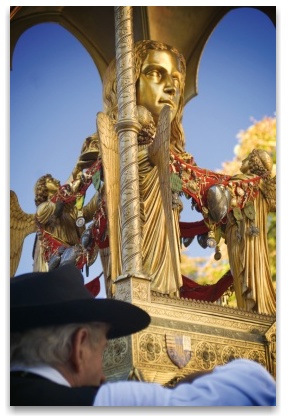
Replica of the Reliquary of St Mary Magdalene
carried in procession
Valerie Barrow and her husband John spent the end of September, all of October and the early part of November 2010 travelling through the UK, France and parts of Egypt. What follows is Valerie’s record of their visit to the Saint-Maximin la Saint-Baume region, where Mary Magdalene resided after her flight from Egypt. There has been a constant monastic presence here preserving the tradition (and the relics) of Mary Magdalene since the Fourth Century.
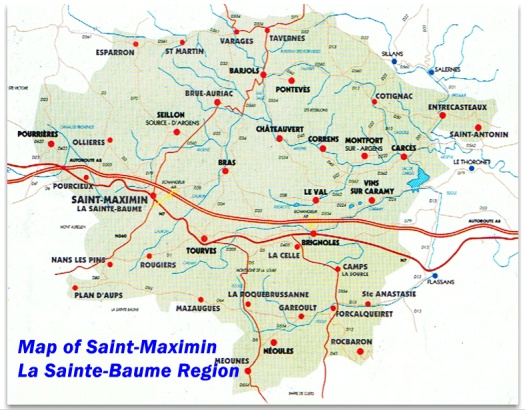
Map of Saint-Maximin la Saint-Baume Region. Click to see a larger map
The area is well known for a geological formation known as Massif, which will come into play in the story which is to unfold.
The region, as evidenced by some archaeological finds, was already a religious center some 3000 years ago. The existence of a huge reserve of water which is fed by all the rivers of the region explains that since prehistoric times, the pagan cults dedicated to the goddesses of fertility were developed there. Some historians believe that the forest has been frequented by the “Druids” at the time of the presence of Celts from the fourth century BCE.
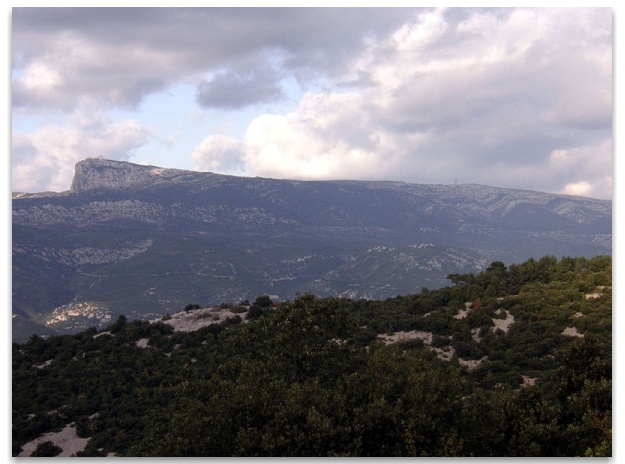
Geological formation known as Massif at Sainte-Baume
The attractive market town of Saint-Maximin lies 300 metres above sea level, surrounded by vineyards and sheltered by the three great ranges of Mont Aurelien, Mont Sainte Victoire and the Massif Sainte Baume.
Originally a Gallo-Roman site north east of Marseilles and The Camargue, this ancient town owes much of its fame to that part of its rich history touched by the mystique and legend of Mary Magdalene.
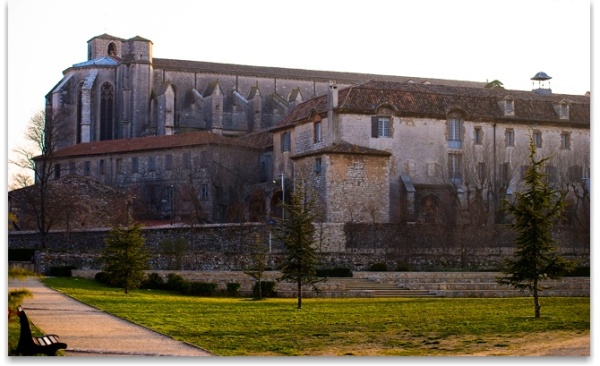
Basilica of St Mary Magdalene surrounded by the Royal Convent
The relics of the saint were discovered here in 1280, in a crypt dating back to the fourth century AD, and thenceforth preserved in a primitive local church. Later, in order to accommodate the ever burgeoning influx of pilgrims, Charles II of Anjou, Count of Provence and nephew to Saint Louis of France ordered, with the blessing of Pope Boniface VIII – the construction of the Basilica of Saint Mary Magdalene and Convent on the same spot.
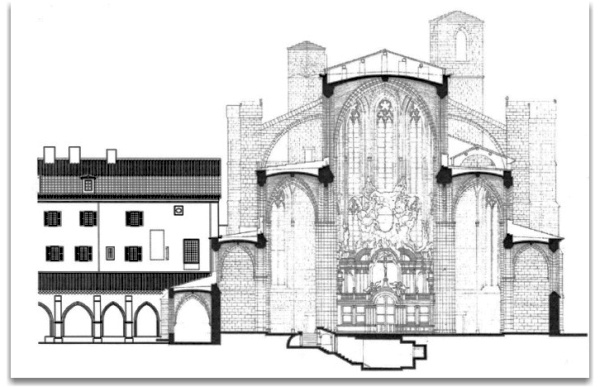
Original plan of the Basilica of St Mary Magdalene showing the location of the crypt.
The Basilica was never completed on account of the Black Death,
and so the entry of the Basilica shows the unfinished face
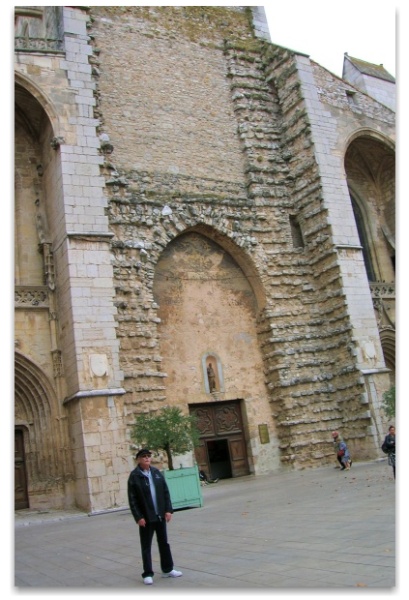
John Barrow standing in front of the Basilica of St Mary Magdalene; the unfinished front is visible
John and I are entranced with being able to stay in the Royal Convent, once occupied by Dominican monks but now converted to comfortable accommodation and restaurant.
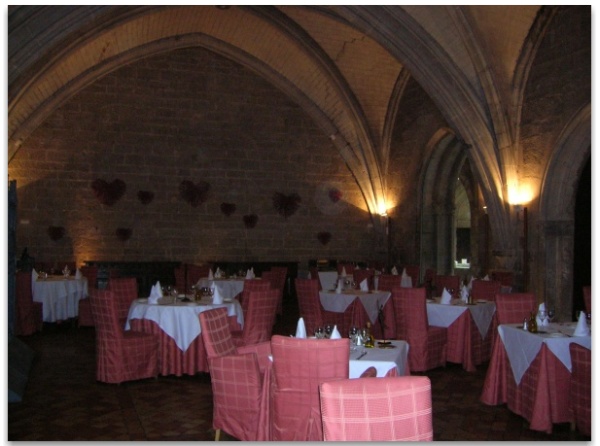
View of the Dining Room of the Royal Convent at Saint-Maximin.
Note the white orb overlaying the bunch of roses, top right
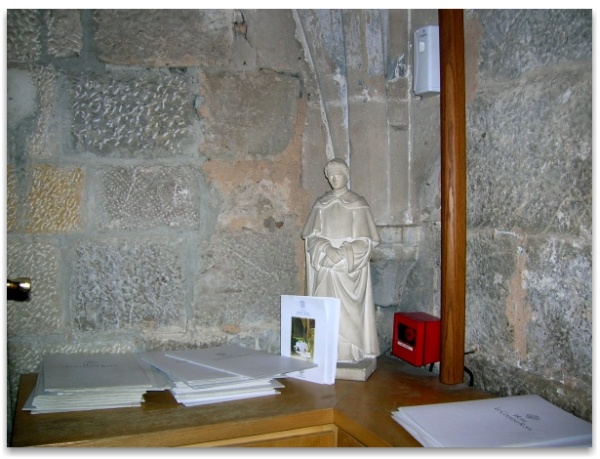
A Dominican monk overlooks the menu in the dining room of the Royal Convent
We soon begin the short walk, virtually next door, to explore the magnificent Basilica. I know the remains of Mary Magdalene are kept in the crypt and I am anxious to view them.

Entrance to the Basilica of St Mary Magdalene at Saint-Maximin
Just after we arrive, the crypt is closed because a sacred ceremony – a Confirmation of Children – is taking place. John and I decide to wait until the ceremony (which lasted about hour) was over.
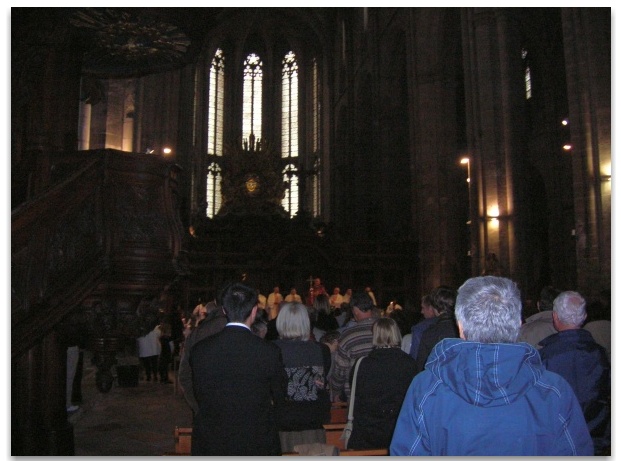
Confirmation Mass was taking place in the Basilica of St Mary Magdalene at Saint-Maximin
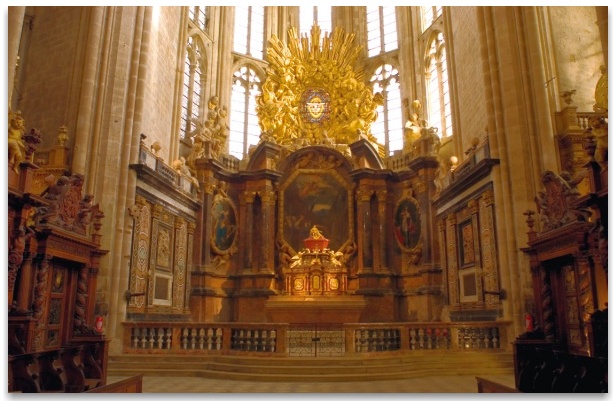
The High Altar in the Basilica of St Mary Magdalene at Saint-Maximin
While waiting for the Crypt to re-open after the Confirmation, I was led to the following photo in the Cathedral, Trilogie, which is believed to be the spirits of the Three Marys.
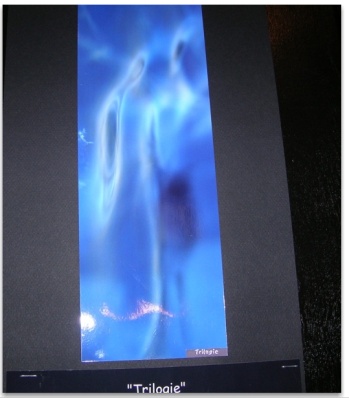
Trilogie, depicting the spirits of the Three Marys at the Basilica of St Mary Magdalene at Saint-Maximin
At the Crypt
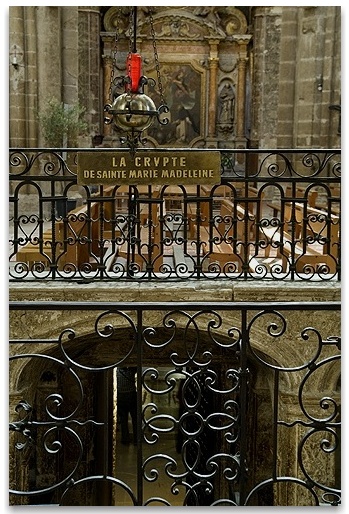
View of the Crypt at the Basilica of St Mary Magdalene at Saint-Maximin
When the Crypt is opened I ask if I can take a photo of the shrine of Mary Magdalene with the skull inside. (see Jehanne/Judith half sister of Issa – Jesus.) I ask my mentor if it is really she? He replies,
“It It is indeed, my dear, for all have come to recognise her and bless her for her work – the ones that understand and know from the origins from which she came.
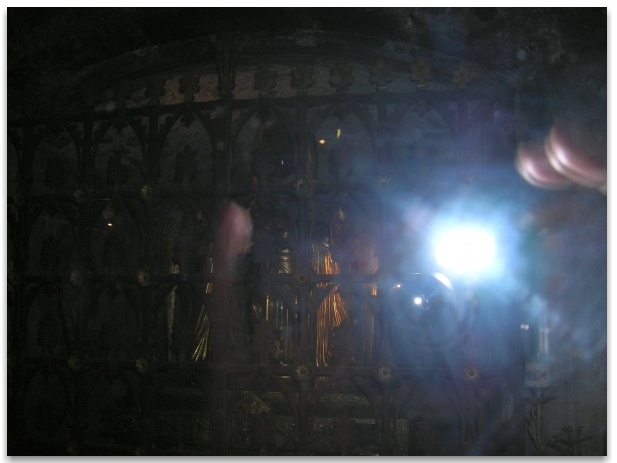
Valerie’s photo of the Shrine in the Crypt
at the Basilica of St Mary Magdalene at Saint-Maximin
The photo that you have – IS – an extra light my dear, so do not question it. It is in acknowledgement of your presence and she is very pleased to see you. Understand her spirit is not just in the crypt, but is omnipresence – and it will follow you to the mountain cave. “
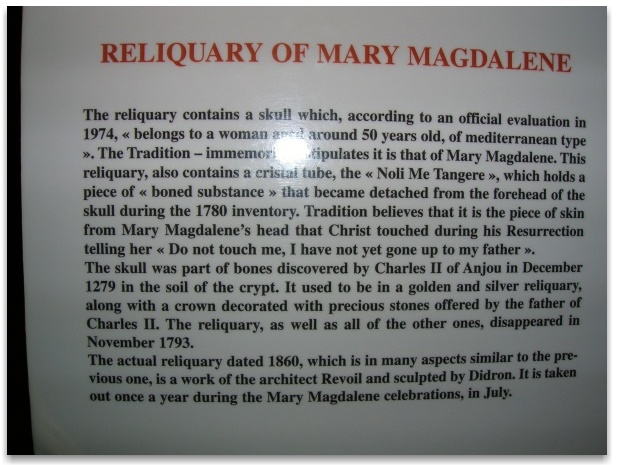
Notice at the Shrine in the Crypt
at the Basilica of St Mary Magdalene at Saint-Maximin
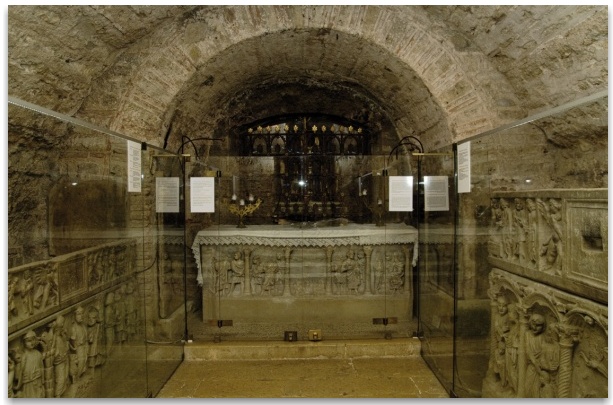
Altar in the Crypt
at the Basilica of St Mary Magdalene at Saint-Maximin
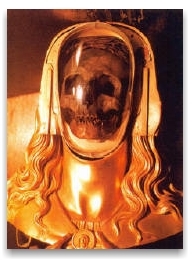
Shrine with Skull of Mary Magdalene
The Crypt also houses the sarcophagi of Saint Maximin, Saint Sidoine, Saint Marcelle and Saint Suzanne—companions of Saint Mary Magdalene on the boats.

Replica of the Reliquary of St Mary Magdalene
carried in procession;
The Feast Day of St Mary Magdalene is July 22nd
Where we witnessed the evocation of the Marys landing at the Camargue along with six other members of Jesus’s family, it was said Saint Maximin was also one of them. It would seem he moved on to the mountain area with Mary Magdalene to spread the teachings.
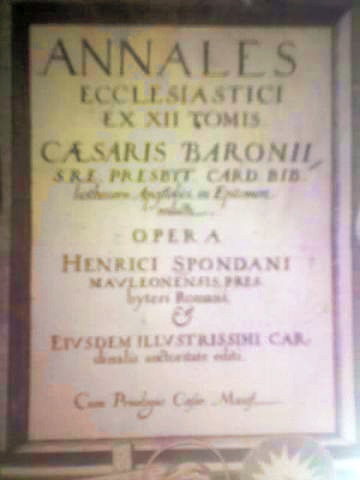
Cover of the Annales Ecclesiastici by Cardinal Caesar Baronius
There is another legend written by Cardinal Baronius, curator of the Vatican Library, in his “Annales Ecclesiastici” (ecclesiastical annals from Christ’s nativity to 1198), consisting of twelve folio volumes, is a history of the first 12 centuries of the Christian Church) giving a complete list of passengers who were said to travel to Marseilles to escape the danger that existed after Jesus was crucified: I am prompted by spirit to research the Web about Joseph of Arimathea and this is the website I am led to: Web Archive (archive of a web page that has since disappeared after creating this page)
“Joseph, with many disciples traveled from the holy land by Phoenician boat and landed at Marseilles (a Phoenician trading post), in the Vienoise province of the Gauls (France) in the year 35 AD. From there Joseph went on to England, to establish seminaries and send out missionaries. Cardinal Baronius, Curator of the Vatican library, in his “Ecclesiastical Annals“, gives this account. “In that year the party mentioned was exposed to the sea in a vessel without sails or oars. The vessel drifted finally to Marseilles and they were saved. From Marseilles, Joseph and his company passed into Britain and after preaching the Gospel there, died.”
Here is Cardinal Baronius’ complete list of passengers:
|
|
|
Other records state that James and Mary, the mother of Jesus, were also in the boat. Philip was waiting for the travelers in France. There is testimony asserting his commission in Gaul, all of which say that he was received and consecrated Josephus the Apostle to Britain, prior to his journey there.”
Alcheringa, (who often speaks on behalf of Cosmic Sai Baba) has advised that there were many ships that came with the refugees from Egypt. The Camargue is not far from Marseilles. The Camargue gypsies hold the legend as told about in my article “Les Saintes Maries de la Mer” that St Salome, St Jacobe and Sarah, along with St Maximin landed at the Carmargue and Alcheringa says, St. Mary Magdalene, Mother Mary and her 2 daughters also landed there along with Joseph of Arimathea and Jesus’ brother James. There were others not mentioned.
Those Saints who have sarcophagi nearby the reliquary of Mary Magdalene at the Basilica here at the village Saint Maximin, are St. Maximin, St. Sidonius, St. Salome, St. Suzanne, who are the same people who are mentioned in the previous list (with the exception of St. Suzanne)
2000 years later, the records of antiquity are difficult to decipher. A companion or disciple is often referred to by name, or from where they came from, or a son of – in different ways so that it is difficult to know when it is the same person being recorded in manuscripts written by different scribes.
There were many who left the Holy Lands via Egypt for safety reasons, after Jesus was crucified. Those, particularly the women, who traveled to and stayed in South of France (then known as Gaul) were still in danger and had to go about their mission of spreading the teachings quietly and almost secretly.
Joseph of Arimathea traveled with others to his familiar territory in the Britannic Isles and began his teaching there. He went on to establish the first Christian Church at Glastonbury. It was not so dangerous there, even though it was still part of the ancient Roman Empire.
In my next article I will be speaking about our visit to Glastonbury, U.K.
Returning to our visit to Saint Maximin, we later walked around the old town, noting how narrow many of the streets were.
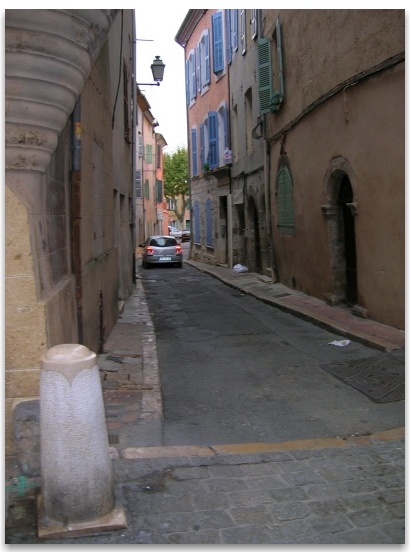
Narrow byways of Saint-Maximin; not much room to pass the car!
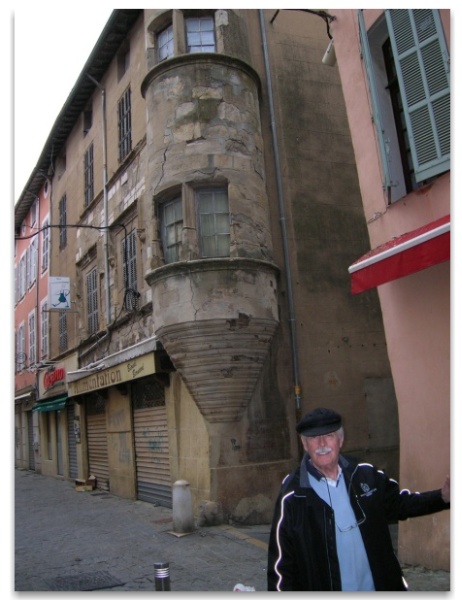
Narrow byways of Saint-Maximin; the room in the corner behind John looks like it is about to fall away.

Some of the lovely cakes we saw on our walk around Saint-Maximin
Go to PART TWO: Our visit to the grotto LA SAINTE-BAUME

